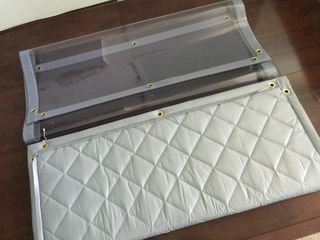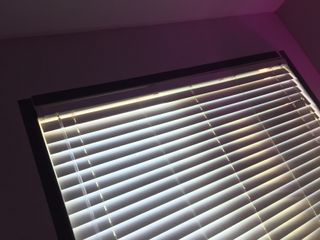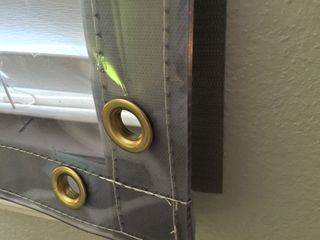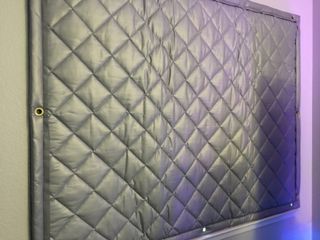How to take your PC audio experience to 11
We take a deep dive into the often unexplored area of the PC, the sound setup.
Sound proofing
While treating the inside of your room can yield significant improvements in your audio experience, there's one thing that could still potentially be a huge distraction: noise coming in from the outside.
I live in a house by myself, so having other people causing noise outside of my room isn't an issue. However, if it is an issue for you, consider checking your doors. Room doors are the primary culprit for sounds coming into a room from within a house or apartment.
Steps you can take: replace hollow-core doors with solid-core doors, consider adding bottom sealed sweep, and making sure the door perimeters are well sealed. If this still poses a problem for you, it may be necessary to get attachable sound blocking panel.
I don't have this kind of noise issue. My problem is that I live within a few miles of San Jose International Airport. And it just so happens that the final approach (and departure when wind is going the other way) path for the airport's traffic pattern is directly above my house. To add insult to injury, there's a freight train that goes by my house several times a night.
So what to do when your job consists of testing sensitive audio equipment all day long? You sound proof your windows, that's what.

I contacted the fine folks at Trademark Soundproofing, which provided two panels: a clear high-density clear panel and a covered high-density panel. You can choose either, depending on whether you still want sunlight from outside.
Both panels are extremely heavy, due to the high-density materials used, and come pre-sewn with industrial Velcro that is used to mount the panels to the perimeter of the windows.
The biggest gaming news, reviews and hardware deals
Keep up to date with the most important stories and the best deals, as picked by the PC Gamer team.
The panels themselves are made of two primary parts: a quilted fiberglass absorption layer, and a barrier septum made from high-density vinyl. The special clear panel however, does not have the quilted fiberglass absorption layer.
Specs:

- Combines noise barrier and sound absorption
- STC: 29 (see product data)
- NRC: .75 (see product data)
- Fire Rating: safe and low smoke emissions as per Class A flammability rating (per ASTM E-84).
- Flame Spread: 22.78
- Smoke Density: 30.56
- Flame Spread: 22.78
- Smoke Density: 30.56
- Flame Spread: 22.78
- Smoke Density: 30.56
- Temperature Range: -20F to +180F
- Weight: 1.43 Lb / sq ft
- Resists most chemicals
- Durable and flexible, conforms to any shape
- For interior applications
- Easy installation and removal for cleaning
The specs above are for the opaque panel, which provides better performance than the clear panel, but the clear panel still performs exceptionally well.

Installation is straight forward. A roll of Velcro is included and you must measure and cut for three or four sides of your window.
All panels come with through holes in them in case you want to install hooks above the window for times when you want to lift up a panel. After all, there will likely be times when your room desperately needs some fresh air.

Once attached, the panels stay secure to the wall. Thanks to Velcro, you're able to remove the panels at any given time.

Test
I used a wireless speaker positioned 1 meter away from my window on the outside of the house and set to play a 300Hz and 1kHz tone. Using a HATS from Bruel & Kjaer, I measured the sound 1 meter away from the opposite side of the window.
The speaker was set so the HATS measured roughly 60dB SPL at both 300Hz and 1kHz with the window closed. The results?
Without barrier @ 300Hz: 60 dB SPL
With barrier @ 300Hz: 46 dB SPL
Without barrier @ 1kHz: 60 dB SPL
With barrier @ 1kHz: 41 dB SPL
While the above are synthetic tests that measure specific frequencies, I wanted to know if the panels would actually prevent the real noise from entering the room. Waiting for the usual planes and trains, I realized I had let an entire day pass by without noticing. The difference was so dramatic that I didn't notice them anymore. Even with the windows closed, I was able to easily hear both the planes and trains and they actually had a measurable impact on my headphone tests. With the panels on, they virtually disappeared.
Most Popular



